Lynyrd Skynyrd Plane Crash and Aftermath
by Best Classic Bands StaffFamous musicians had died in airplane crashes before. In 1959, we lost three at once: Buddy Holly, Ritchie Valens and the Big Bopper. Otis Redding, along with four members of the Bar-Kays, had gone down in 1967, only three days after the soul great recorded “(Sittin’ on) The Dock of the Bay.” In 1973, singer-songwriter Jim Croce’s plane hit a tree, killing him and five others.
Still, rock fans were in shock when they learned that two key members of Lynyrd Skynyrd—Ronnie Van Zant and Steve Gaines—had perished in a plane crash, along with backup singer Cassie Gaines (Steve’s sister), following a performance in Greenville, S.C., on the night of October 20, 1977. Also killed were the band’s assistant road manager and the pilot and co-pilot. According to reports at the time, the band’s chartered Convair CV-300 ran out of fuel due to a faulty engine; an attempt to make an emergency landing failed and the plane went down in a forested area near Gillsburg, Miss.
The other band members—Gary Rossington, Allen Collins, Leon Wilkeson, Billy Powell, Artimus Pyle and backup singer Leslie Hawkins—were all injured to varying degrees.
Like the others named in the lead paragraph, Lynyrd Skynyrd was at the peak of their popularity when the tragedy occurred. Only three days earlier, they’d released their fifth studio album, Street Survivors. It was already being hailed as one of the band’s best efforts to date, including such solid tunes as “That Smell,” “What’s Your Name” and “You Got That Right.”
At that point Skynyrd had only been a force for about four years. Although Van Zant, Rossington and Collins had been playing together in Jacksonville, Fla., since 1964, under various band names (becoming Lynyrd Skynyrd, named after high school gym teacher Leonard Skinner, in 1969), it wasn’t until 1972 that fame started to beckon. That year they were discovered by musician/producer Al Kooper, who had seen the band perform in Atlanta and signed them to his own boutique record label, Sounds of the South. With distribution by MCA Records, their debut release, Lynyrd Skynyrd (pronounced leh-nerd skin-nerd), was released in 1973 and reached a respectable #27 on the Billboard album chart.
Firmly in the Southern rock tradition of the Allman Brothers Band, but with a harder edge, the album caught on, in large part due to a little nine-minute tune called “Free Bird” that closed it out. The song received heavy airplay on FM rock stations and the band’s opening slot on the 1973 Who tour gave them exposure that helped boost their 1974 followup, Second Helping, to #12. That album led off with “Sweet Home Alabama,” a defense of the South and open rebuke of Neil Young’s “Southern Man.” Both that song and “Free Bird” would, of course, go on to become permanent staples of the classic rock canon.
Watch Lynyrd Skynyrd perform “Free Bird” live in 1977
‘Sweet Home Alabama” rocketed to #8 on the singles chart, establishing Skynyrd as a major rock band. Their 1975 Nuthin’ Fancy album became their first to reach the top 10 and although the followup, 1976’s Gimme Back My Bullets, only reached #20, Lynyrd Skynyrd was still at the top of their game when they recorded Street Survivors in 1977.
Eerily, the original cover photo of that album had depicted the band, particularly Steve Gaines–making his first and only appearance on a Skynyrd album–surrounded by flames. MCA reissued the album following the crash with a similar photo sans fiery background.
In the immediate aftermath, Lynyrd Skynyrd Productions, Inc. made a statement about the band’s future: “Though no details have been worked out, it is extremely likely that Gary Rossington, Allen Collins, Leon Wilkeson, Billy Powell, Artimus Pyle and Leslie Hawkins will compose, record and play their music together at some time in the future.”
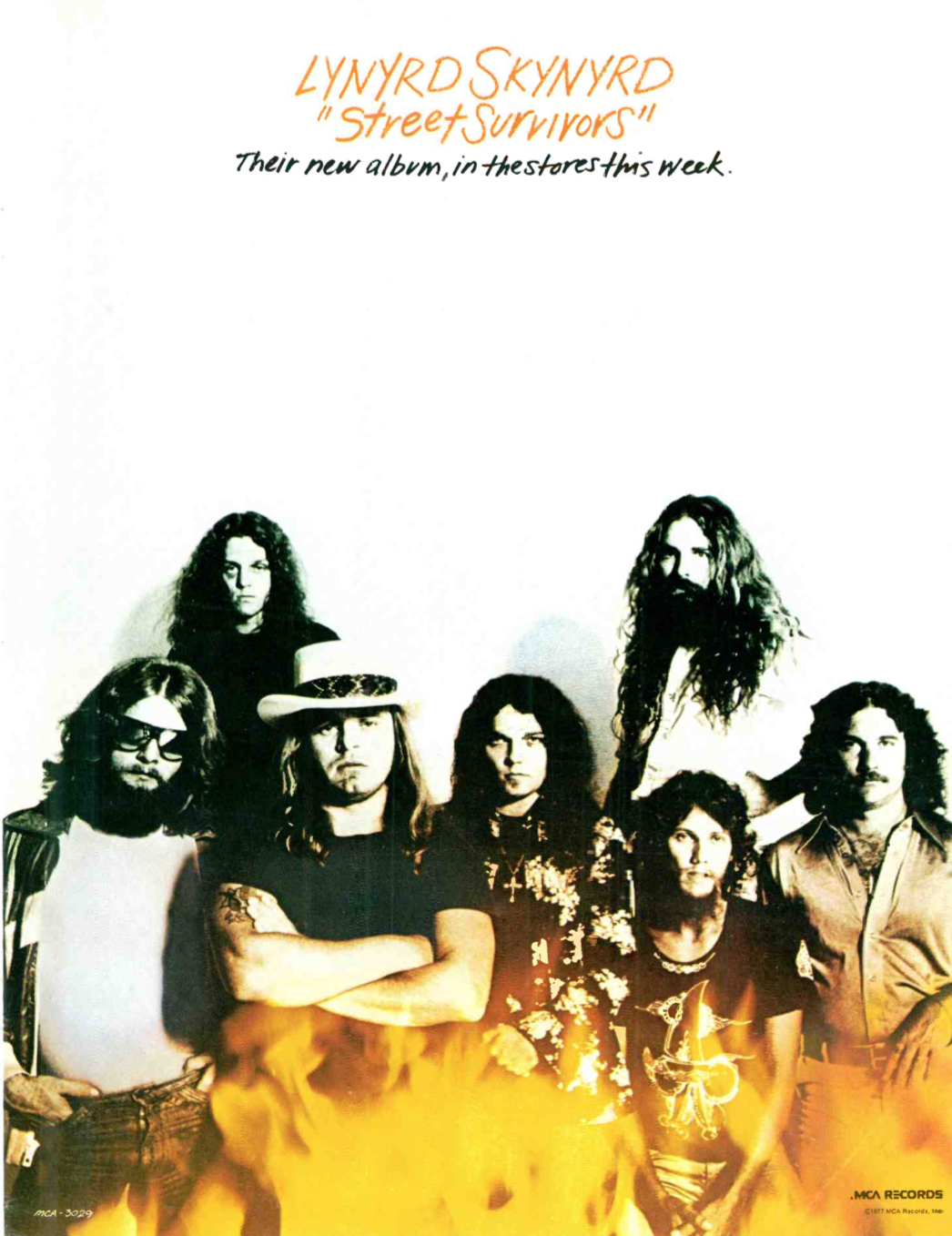
The original ad for the Street Survivors album
Following the deaths, the album made it to #5 but the toll of the crash was too much on the band, and they split up. Rossington, Collins, Wilkeson and Powell re-formed in 1980 and released two albums as the Rossington-Collins Band, with a woman, Dale Krantz, singing lead. (Rossington and Krantz would marry in 1982.)
Related: When a radio legend and a bottle of Jack saved a Skynyrd concert
In 1987, a full decade after the accident, a new Lynyrd Skynyrd was formed, with Rossington, Powell, Wilkeson and Pyle, plus the band’s original guitarist Ed King, and Ronnie Van Zant’s younger brother, Johnny. He and Rossington still lead a version of Lynyrd Skynyrd today, but most fans agree that nothing will ever top the classic lineup that was so horrifically impacted by a malfunctioning aircraft only four years into their run.
Lynyrd Skynyrd was inducted into the Rock and Roll Hall of Fame in 2006.
Watch Lynyrd Skynyrd perform “What’s Your Name” from Street Survivors live in 1977

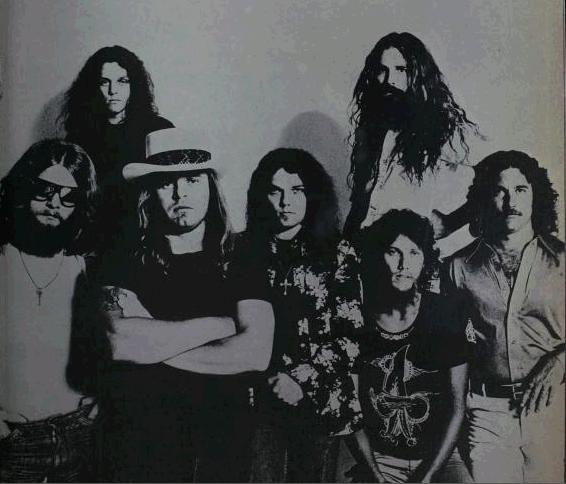
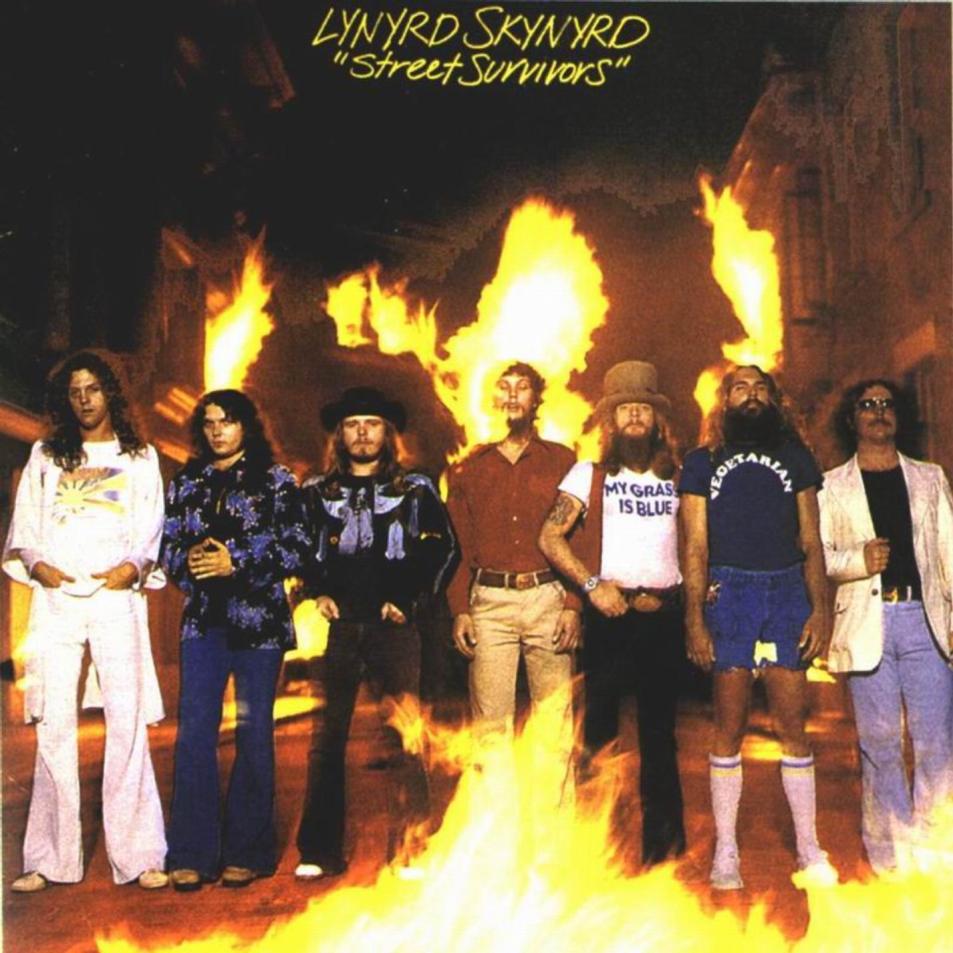

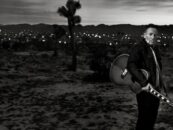

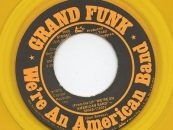

2 Comments so far
Jump into a conversationThere were a whole lot of sad and heartbroken fans that night at LSU, as well as the rest of the globe. Ronnie Van Zant and the band were next set to play in Baton Rouge the following night. The world was robbed of yet another great band.
If you have an extra hour traveling on I-55 just south of McComb, MS take in the Lynyrd Skynyrd memorial of the Gillsburg exit. It’s very well done and maintained. Just 10 minutes off the highway.